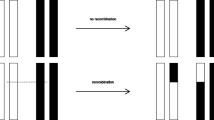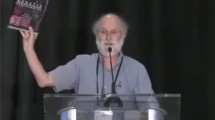Abstract
We study biological recombination from language-theoretic and machine learning point of view. Two generative systems to model recombinations are introduced and polynomial-time algorithms for their language membership, parsing and equivalence problems are described. Another polynomial-time algorithm is given for finding a small model for a given set of recombinants.
Access this chapter
Tax calculation will be finalised at checkout
Purchases are for personal use only
Preview
Unable to display preview. Download preview PDF.
Similar content being viewed by others
References
Creighton, H., McClintock, B.: A correlation of cytological and genetical crossingover in Zea mays. PNAS 17, 492–497 (1931)
Crochemore, M., Rytter, W.: Jewels of Stringology. World Scientific, Singapore (2002)
Daly, M., Rioux, J., Schaffner, et al.: High-resolution haplotype structure in the human genome. Nature Genetics 29, 229–232 (2001)
Koivisto, M., Perola, M., Varilo, et al.: An MDL method for finding haplotype blocks and for estimating the strength of haplotype block boundaries. In: Pacific Symposium on Biocomputing (PSB2003), pp. 502–513. World Scientific, Singapore (2003)
Patil, N., Berno, A., Hinds, D.A., et al.: Blocks of limited haplotype diversity revealed by high-resolution scanning of human chromosome 21. Science 294, 1719–1723 (2001)
Salomaa, A.: Jewels of Formal Language Theory. Computer Science Press (1981)
Sevon, P., Ollikainen, V., Toivonen, H.T.T.: Tree pattern mining for gene mapping. Information Sciences (to appear)
Ukkonen, E.: Finding founder sequences from a set of recombinants. In: Guigó, R., Gusfield, D. (eds.) WABI 2002. LNCS, vol. 2452, pp. 277–286. Springer, Heidelberg (2002)
Zhang, K., Deng, M., Chen, T., et al.: A dynamic programming algorithm for haplotype block partitioning. PNAS 99, 7335–7339 (2002)
Author information
Authors and Affiliations
Editor information
Editors and Affiliations
Rights and permissions
Copyright information
© 2004 Springer-Verlag Berlin Heidelberg
About this chapter
Cite this chapter
Koivisto, M., Rastas, P., Ukkonen, E. (2004). Recombination Systems. In: Karhumäki, J., Maurer, H., Păun, G., Rozenberg, G. (eds) Theory Is Forever. Lecture Notes in Computer Science, vol 3113. Springer, Berlin, Heidelberg. https://doi.org/10.1007/978-3-540-27812-2_15
Download citation
DOI: https://doi.org/10.1007/978-3-540-27812-2_15
Publisher Name: Springer, Berlin, Heidelberg
Print ISBN: 978-3-540-22393-1
Online ISBN: 978-3-540-27812-2
eBook Packages: Springer Book Archive




